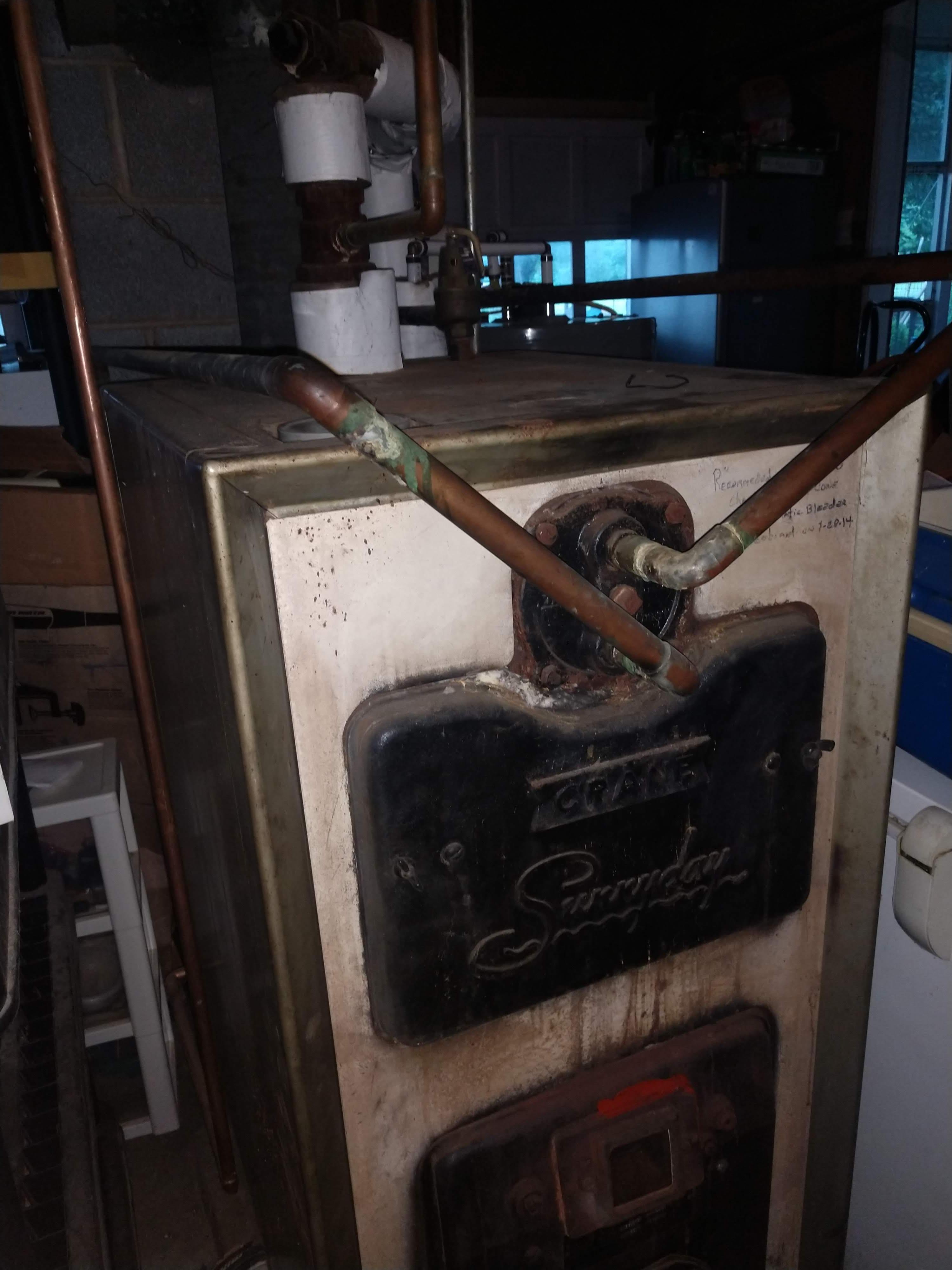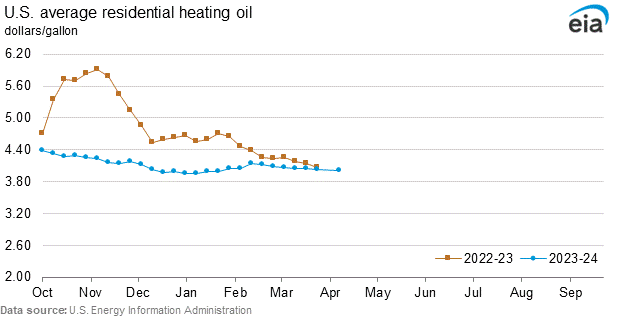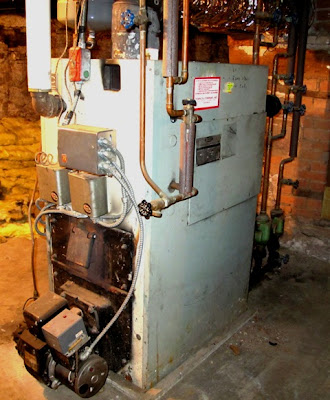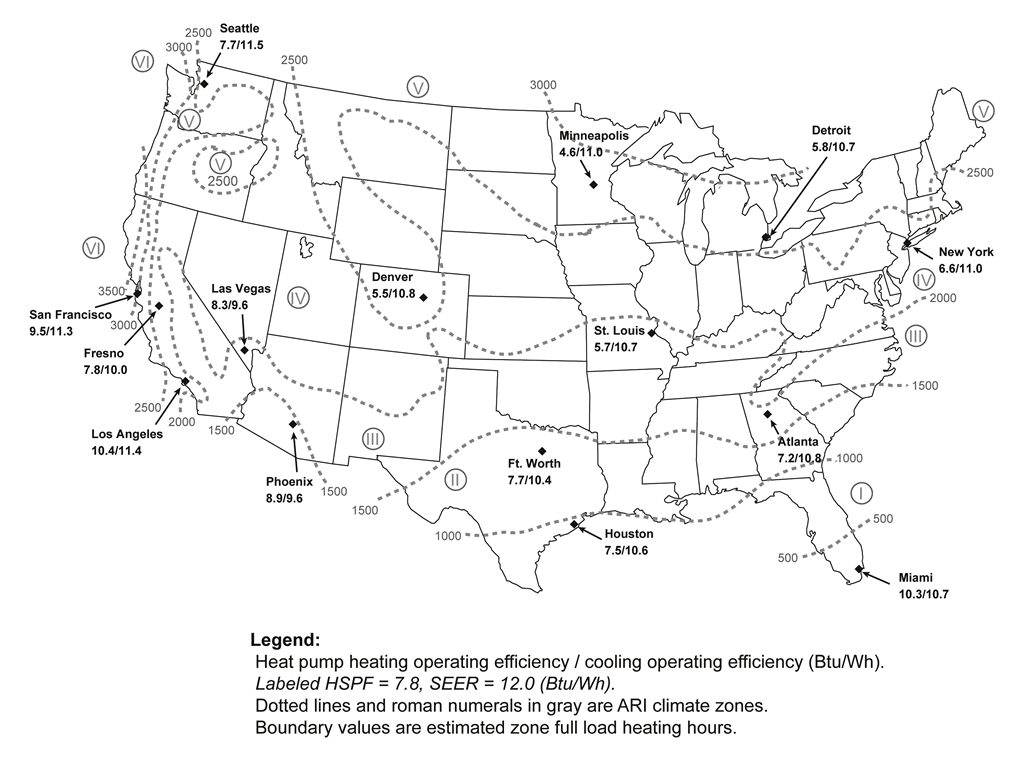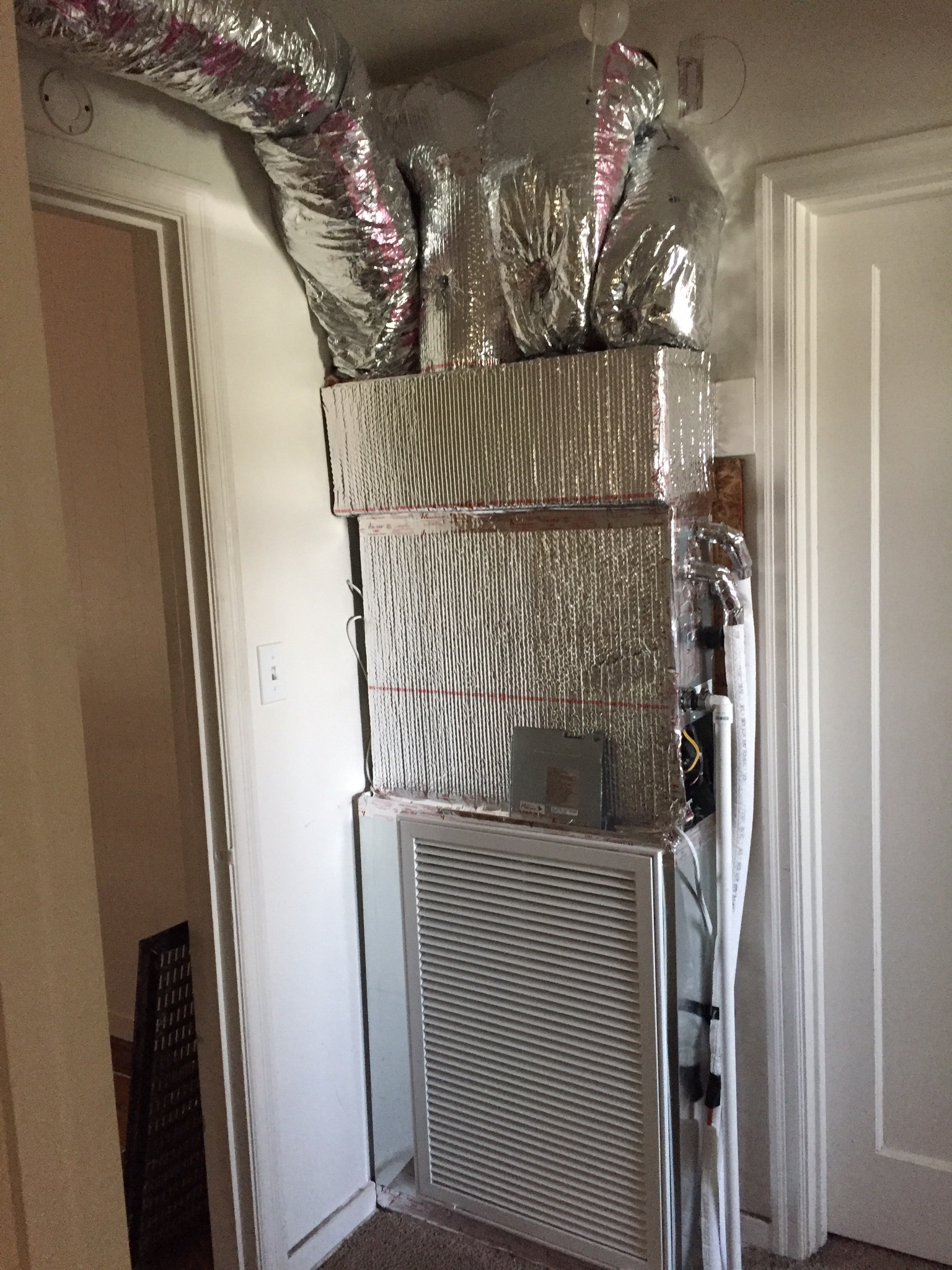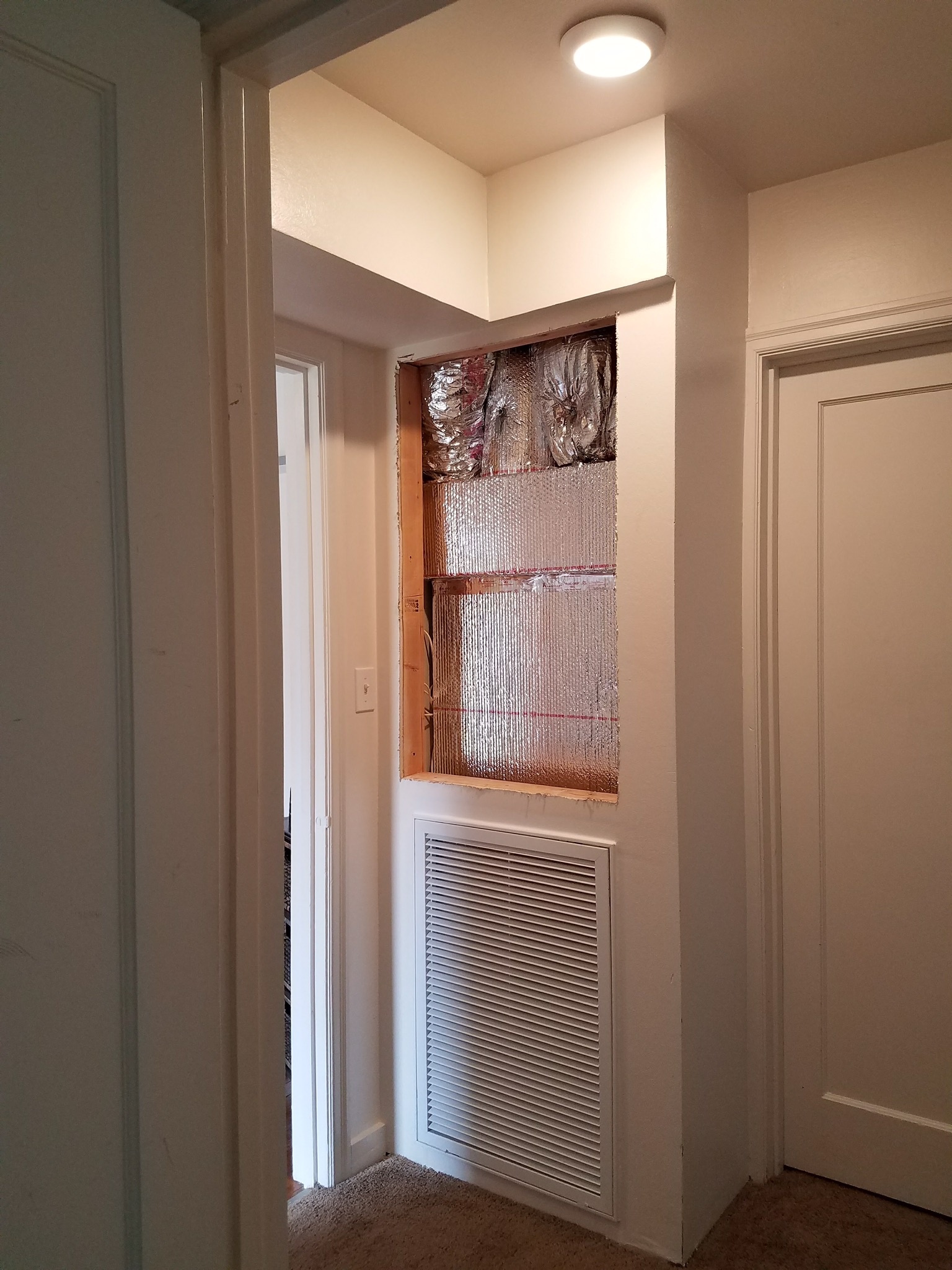"...a
t that average temperature of 64 degrees..."
If you're keeping the house at 64 degrees use base 59 or base 60HDD not base 65F, assuming it's a 2x4/R11-R13 type house. That will result in higher BTU/HDD slope constant due to the fewer heating-degrees.
Then add 4 degrees to the total your heating degrees to figure out what it takes to keep it at a code-minimum 68F indoors when working a fuel-use load calc. For NEST data when it was kept at 61F in the house use base 57F. Degreedays.net has very good weather station coverage for most of the US, and allows you to adjust the base temperature over a wide range.
The fact that the boiler is in the garage (?), outside the fully conditioned space means you're distribution losses are something like 15% of the total use.
Cost per kwh is $0.1036. I would assume some 12,000w electric system, used for 284.56 hrs of heat would be 3,414.72 kwh total, or an estimated cost of $353.76. Is that math right? I spent $678.87 on those 245.6 gallons of oil, so it sounds like I'd be cutting my costs in almost half (less the cost of equipment).
The cost calculation looks right.
Mind you, even a cheap 1 ton
Mr. Cool DIY has an HSPF of 8.8 (= 8800 BTU/kwh as opposed to 3412 BTU/kwh with an electric boiler), and if right-sized for the zone load would actually beat that average efficiency, and per it's AHRI rating can deliver at least 12000 BTU/hr @ +17F outdoors 70F indoors. It will have somewhat more capacity than that at 64F indoors.
The 3/4 ton ducted
Fujitsu 9RLFCD uses a more efficient cold climate vapor injection type compressor, and can deliver 16,000 BTU/hr @ +17F, with an average HSPF efficiency of 12.2 ( 12,200 BTU/kwh). You can beat that efficiency in practice in your location if right-sized, and you're keeping the house at 64F.
The AHRI heating-hours zone maps put Greensboro in zone III, whereas the HSPF efficiency models it for Zone IV, sometimes also Zone Vwhich is somewhat cooler for a higher heating duty cycle, but also a lower COP efficiency:
Of the ducted mini-splits Fujitsu units have the most flexible installation configurations, since they can be mounted vertically or horizonally and the cooling season condensation can still drain correctly. Most are horizontal-only. They also have a large turn-down ratio (all sizes can modulate down to 3100BTU/hr), partly due to the more sophisticated compressor design.
Midea has some attractively priced ducted mini-splits that use Toshiba's compressor technology, which might be a reasonable to do as a "DIY-mostly". I don't know too much about them (I'm usually looking at equipment for heating design temperatures 10-25F colder than yours.) Carrier mini-splits are all rebadged Midea units these days- it's a first-tier Chinese manufacturer, after buying into Toshiba's compressor factory over a decade ago. The ones listed on the
NEEP (New England) site are only the larger sizes, but they make as small as
3/4 ton and
1-ton, at HSPFs in the 10s.
When designing duct systems for ducted mini-splits pay careful attention to the static pressure specs. The higher efficiency Fujitsus can handle 0.4" w.c., many of the competitors on the smaller sizes are only good for 0.2", as compared to the ~1.0" w.c. most bigger air handlers are specified at. Some mini-split vendors now offer "mid-static" version that can handle up to 0.8" w.c., but they're usually slightly lower efficiency and more expensive. If you design the duct velocities to stay <400 feet per minute at the maximum blower speed and use hard-piped duct (or tightly stretched flex), only radiused and use only large pleated filters (eg Aprilaire 2400) the static pressures stay low enough to use the wimpier duct cassettes. Using smaller registers and tapered boots is sometimes useful to get good mixing in the rooms at the lower cfm.
This is a 1.5 ton Fujistu mounted vertically in a 7-8 square foot "utility closet". The big grill is the common return & filter- the cassette is mid height, tied to a short fat plenum with flex running to four separate rooms (some of those ducts ended up in soffits below the ceiling level.)
A horizontal mount can sometimes fit under the ceiling in a closet, keeping it fully inside the thermal and pressure boundary of the house to avoid distribution losses and air-handler driving outdoor air infiltration, which becomes important at the high temperature differences in heating mode (50F peak delta compared to 25F in the cooling season)
If your first floor AC ducts are reasonably routed mostly inside of conditioned space it may be worth swapping in a right-sized heat pump (or a right-sized mini-split using the existing ducts.) Even a pretty-good HSPF 8.5 two-stage Goodman can be dramatically cheaper to heat with than an electric boiler. Most existing central air is grossly oversized for the actual loads- it's worth running a Manual-J, even a freebie/cheapie version such as CoolCalc.com or Loadcalc.net is better than a WAG. If you also have NEST data on the AC cycling you can probably infer the cooling load from the duty cycle, which would be even better yet. LoadCalc usually oversizes by 25-35% even when selecting "tight" construction type, so be aggressive rather than conservative on the R-value assumptions and duct tightness, etc.
Upsizing a modulating mini-split by 1.3x for either heating or cooling is fine of that's what it takes to cover both, 1.5x only if you must, but beyond that it starts to inch down in as-used efficiency ( with a few notable exceptions for "hyper heating" or those with cold climate compressor types, like the Fujitsus.) Look up the capacities from the extended temperature capacity tables in the engineering or installation manuals- the AHRI nominal capacities are based on temperatures that can differ from your actual 1% & 99% outside temperatures and humidity conditions. If using a fuel-use based load calculation you'll have to guesstimate the distribution losses of the boiler relative to those of the ducts & air handler. Just the standby losses of an old way-oversized boiler in the garage can be pretty bad, so it's unlikely that your ducts & air handler for the first floor would be worse (TBD.)
You might want to
read up on this (get a free trial subscription) and the related articles on that site before finalizing any heat pump or mini-split decisions.
